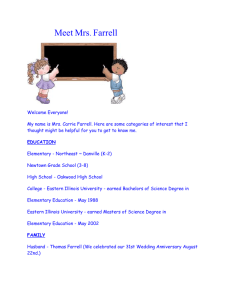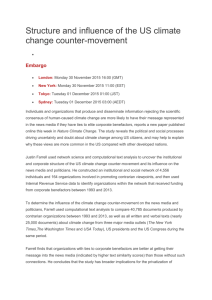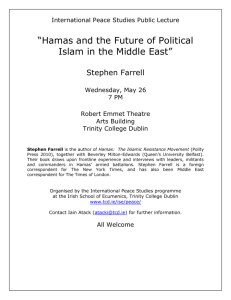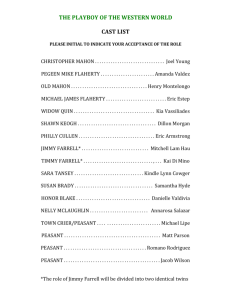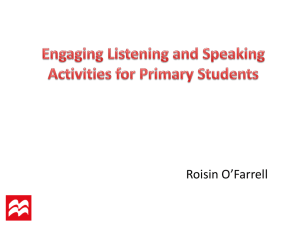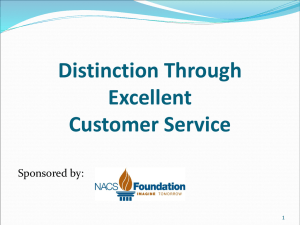Towards a Model of Computer Security
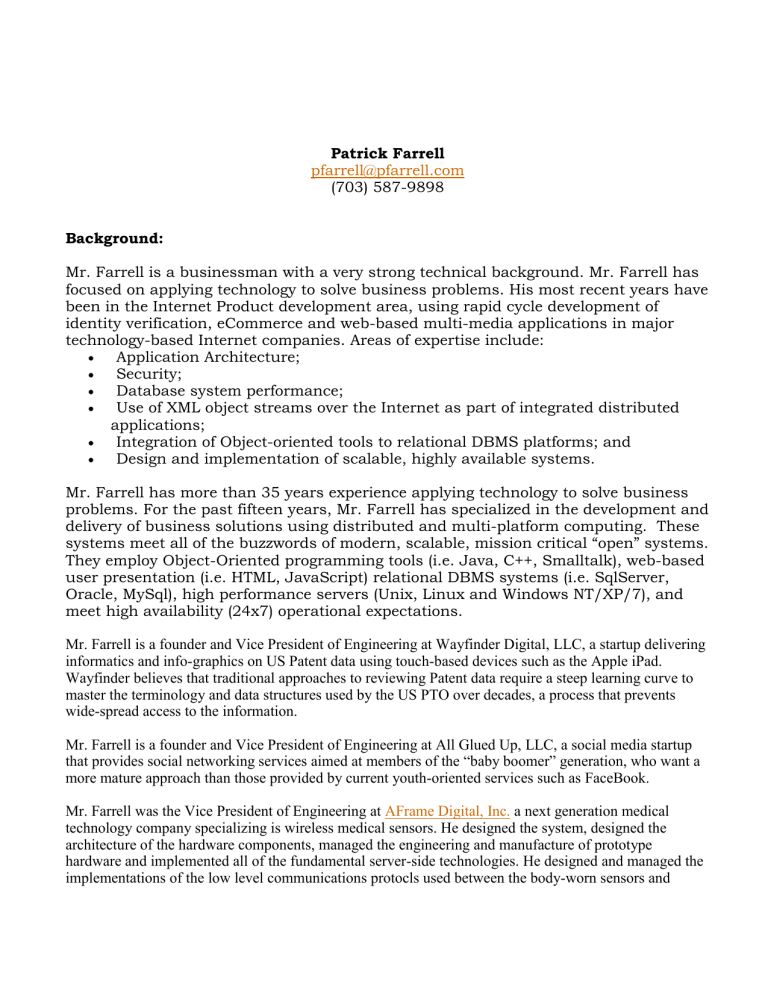
Patrick Farrell pfarrell@pfarrell.com
(703) 587-9898
Background:
Mr. Farrell is a businessman with a very strong technical background. Mr. Farrell has focused on applying technology to solve business problems. His most recent years have been in the Internet Product development area, using rapid cycle development of identity verification, eCommerce and web-based multi-media applications in major technology-based Internet companies. Areas of expertise include:
Application Architecture;
Security;
Database system performance;
Use of XML object streams over the Internet as part of integrated distributed
applications;
Integration of Object-oriented tools to relational DBMS platforms; and
Design and implementation of scalable, highly available systems.
Mr. Farrell has more than 35 years experience applying technology to solve business problems. For the past fifteen years, Mr. Farrell has specialized in the development and delivery of business solutions using distributed and multi-platform computing. These systems meet all of the buzzwords of modern, scalable, mission critical “open” systems.
They employ Object-Oriented programming tools (i.e. Java, C++, Smalltalk), web-based user presentation (i.e. HTML, JavaScript) relational DBMS systems (i.e. SqlServer,
Oracle, MySql), high performance servers (Unix, Linux and Windows NT/XP/7), and meet high availability (24x7) operational expectations.
Mr. Farrell is a founder and Vice President of Engineering at Wayfinder Digital, LLC, a startup delivering informatics and info-graphics on US Patent data using touch-based devices such as the Apple iPad.
Wayfinder believes that traditional approaches to reviewing Patent data require a steep learning curve to master the terminology and data structures used by the US PTO over decades, a process that prevents wide-spread access to the information.
Mr. Farrell is a founder and Vice President of Engineering at All Glued Up, LLC, a social media startup that provides social networking services aimed at members of the “baby boomer” generation, who want a more mature approach than those provided by current youth-oriented services such as FaceBook.
Mr. Farrell was the Vice President of Engineering at
AFrame Digital, Inc.
a next generation medical technology company specializing is wireless medical sensors. He designed the system, designed the architecture of the hardware components, managed the engineering and manufacture of prototype hardware and implemented all of the fundamental server-side technologies. He designed and managed the implementations of the low level communications protocls used between the body-worn sensors and
AFrame's analytical servers. The patent that was granted for this work was assigned to
AFrame. He is still on the Board of Directors of this company.
Mr. Farrell was the first employee at Trufina.com
a startup that provides identity validation and verification services to the online dating service providers. As Alchemist,
Mr. Farrell designed and was instrumental in the implementation of the Trufina systems. These systems were Java-based, with JBoss container and MySql database engine.
Mr. Farrell did high level architectural and security system design and management consulting for the “CORE” system at Fannie Mae. The CORE system will replace more than twenty years of legacy financial applications with a distributed, scalable, N-tiered system that provides both reporting and management analysis.
Mr. Farrell was the Alchemist at One Big CD, a leading firm in the electronic distribution of music. Mr. Farrell designed and implemented critical components of the
One Big CD system, including webservers that deliver the streaming media content.
The OneBigCD system used industrial strength cryptography, digital signatures, onetime URLs, and XML.
Mr. Farrell was the “Instabuy Alchemist” at CyberCash. He was the technical architect of the InstaBuy electronic wallet released by CyberCash in 1998. He built the initial versions of the system, and directed the development of the production InstaBuy service. The patent that was granted for this work was assigned to CyberCash. He developed the architecture and design of high speed, high volume transaction processing system that handled more than 40 percent of CyberCash's total transaction volume.
He was the project manager for CyberCash's SET (Secure Electronic Transaction) project, a joint effort among CyberCash, Netscape, Toshiba, and Visa International. Mr
Farrell wrote the encryption software used by the SET project.
Mr. Farrell worked for eighteen years at American Management Systems, Inc. (AMS) as a Senior Principal. During this time, AMS grew from a private company with two hundred employees to a public, international consulting firm with more than 6000 employees and nearly a billion dollars of revenue. Mr. Farrell's projects included work for many US Federal agencies and large corporations.
U.S. Government Clearance:
Position of Trust (Treasury) (active since 2003)
Secret (DoD) (inactive since 1997)
Patent Granted
US Patent and Trademark Office: 6,092,053
System and method for merchant invoked electronic commerce. July 18, 2000
US Patent and Trademark Office: 7,616,110
Mobile wireless customizable health and condition monitor: November 10, 2009.
College Courses Taught
Graduate Level:
EMB 680 Project Management, Statford University, 2004
CS 571 Operating Systems, George Mason University, 1992
Undergraduate level taught at George Mason University (2011):
AIT108 Introduction to Programming using Java
Undergraduate level taught at Stratford University (2002 through 2004):
CIS232 Introduction to Oracle and Sql
CIS292 Project Management
CIS305 E-Business IT Infrastructure
CIS310 E-Commerce Business Software Infrastructure
CIS450 Integrating Internet into the Enterprise
Education
BS Mathematics, 1974
Virginia Tech, Blacksburg, Virginia
MS Computer Science, 1993
George Mason University, Fairfax, Virginia
Completed coursework, comprehensives and thesis proposal for a PhD in Information
Systems, 1995 (ABD). Research areas included security, operating systems, project estimation and measurement, and database systems. George Mason University,
Fairfax, Virginia
PRESENTATIONS AND PUBLICATIONS:
Towards a Model of Computer Security
October 1992 National Computer Security Conference, Fort Meade, MD, with William
H Murray.
Using Bayesian networks and rule-based trending to predict patient status in the intensive care unit.
Crump C, Saxena S, Wilson B, Farrell P, Rafiq A, Silvers CT. Proc AMIA Symp. 2009 (in press).
American Medical Informatics Association (www.amia.org)
Computer Virus in Internet, reaction and control for commercial computer users; CNN
(Cable News Network) November 1988.
Technology summary:
Java (13 years)
JEE/Jboss/Tomcat/Glassfish (8 years)
JSP and servlets (8 years, including Resin and Tomcat)
XML (6 years)
RDBMS (35 years, including Oracle, MySql, SqlServer and many others)
IDE systems (20 years, including Eclipse and Netbeans)
Windows technical development (15 years, since Windows 2.11, up through XP)
Unix, unix-like, and Linux (more than 20 years).
Version control systems (15 years, including Source Safe, CVS, PVCS, SVN, git)
All major development languages (more than 35 years. Including C++, C#, Perl,
PHP, Cobol, Fortran, SmallTalk, VisualBasic)
